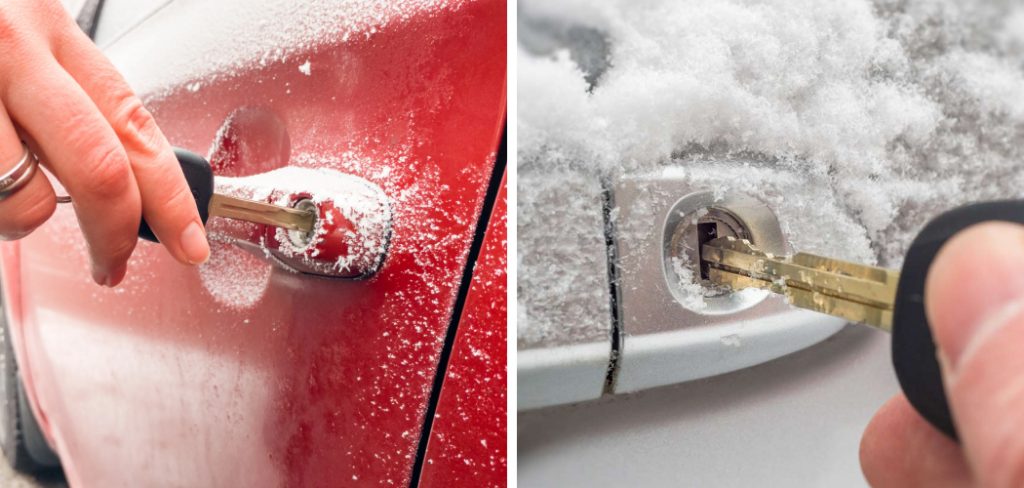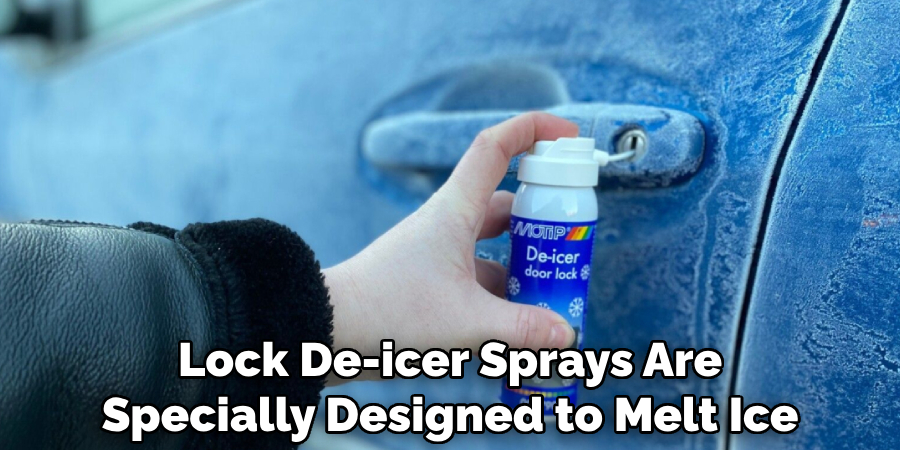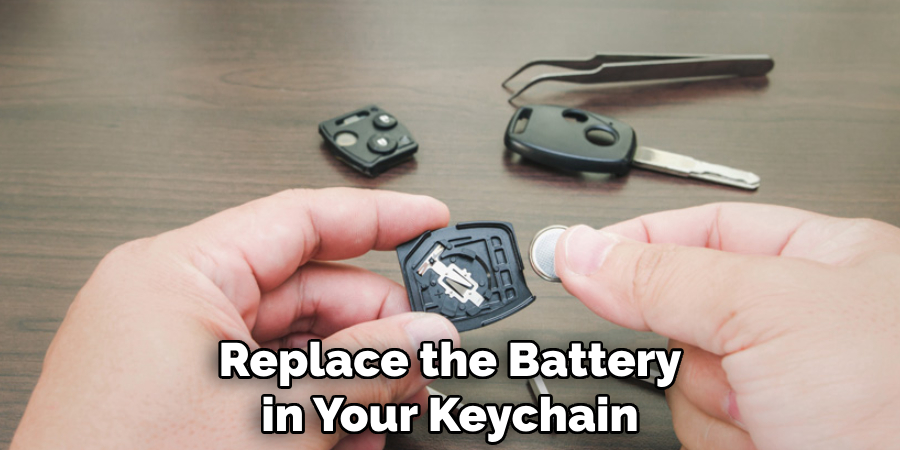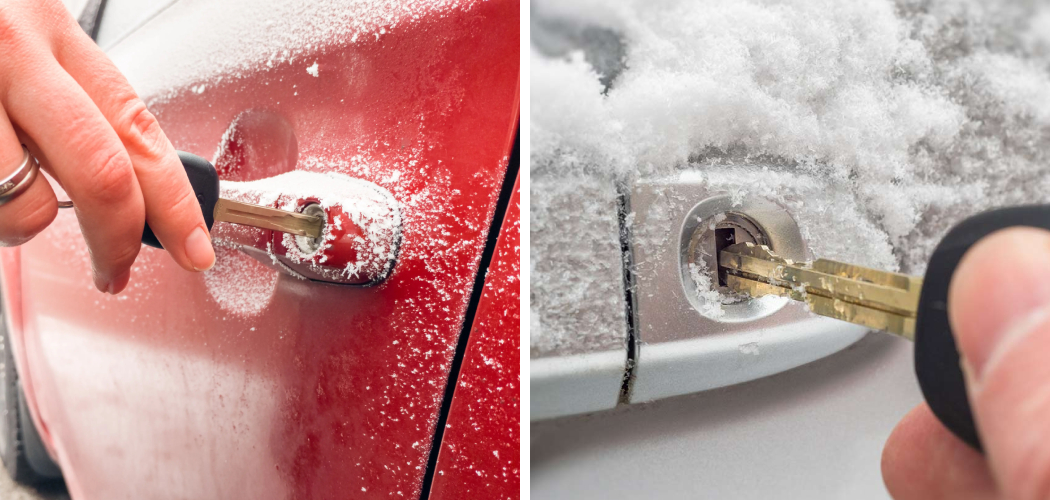Jeep owners in colder climates know the frustration of a frozen lock all too well. As temperatures drop, the risk of your Jeep’s locks freezing increases, potentially leaving you stranded or late for your appointments. Fortunately, there are preventive measures you can take to mitigate this winter inconvenience.

This guide on how to prevent jeep lock freezing will walk you through practical tips and tricks to keep your Jeep’s locks thawed and functional even in the coldest conditions. Whether you’re off on a snowy adventure or just facing the daily commute, these simple steps can ensure that a frozen lock never slows you down.
What is a Frozen Lock?
A frozen lock is what happens when moisture or condensation gets into the keyhole of your Jeep’s locks and freezes, preventing you from inserting the key or turning it to unlock the door. This can happen in any weather below freezing, but it is especially common during winter when temperatures drop drastically.
You may also experience a frozen lock if you’ve recently washed your Jeep and water has gotten into the keyhole or if you’ve parked in an area with high humidity. It is important to note that both electric and manual locks can freeze, so it’s essential to take preventive measures regardless of the type of lock your Jeep has.
Needed Materials
Before diving into the preventive measures, make sure you have these materials on hand:
Lock De-icer Spray or Wd-40:
These products are specially designed to melt ice and lubricate locks.
Rubbing Alcohol:
This common household item can also be used to thaw frozen locks.
Keychain With a Remote Start Button:
If your Jeep has a remote start feature, having a keychain with a remote start button can save you from manually unlocking your Jeep in freezing temperatures.

12 Step-by-step Guidelines on How to Prevent Jeep Lock Freezing
Step 1: Understanding the Causes of Lock Freezing
As mentioned earlier, the primary cause of lock freezing is moisture or condensation. Therefore, it is essential to understand how and when this can happen so you can take preventive measures accordingly. But don’t worry; the following steps will guide you through every possible scenario. If you follow them, your Jeep’s locks will be frost-free all winter long. The best part? You probably already have everything you need at home!
Step 2: Keep Your Jeep in a Garage
The most straightforward way to prevent your locks from freezing is to keep your Jeep inside a garage. If you have access to one, this should be your go-to option during winter. This will not only keep your locks thawed but also protect your vehicle from harsh weather conditions. It’s a win-win situation. But if you don’t have a garage, keep reading for more tips. The next steps will come in handy!
Step 3: Invest in a Lock De-icer Spray
As mentioned earlier, lock de-icer sprays are specially designed to melt ice and lubricate locks. Keep a small bottle of this product with you at all times during winter. It’s an excellent preventive measure that can save you from being locked out of your Jeep. But remember, these sprays are only a temporary solution. If your locks keep freezing, you need to take more preventive measures. The following steps will guide you through some long-term solutions. You can buy lock de-icer sprays at any auto parts store or online.

Step 4: Use Rubbing Alcohol
If you don’t have a lock de-icer spray on hand, rubbing alcohol can be a great alternative. Pour some rubbing alcohol into a small spray bottle and keep it in your car. Spray the alcohol into the keyhole, and it will melt any ice or frost that may have accumulated. This method is also effective for preventing locks from freezing if you apply it before temperatures drop below freezing. The alcohol will act as a barrier, preventing moisture from entering the keyhole and freezing.
Step 5: Keep Your Keyhole Covered
There are various keyhole covers available in the market that can protect your Jeep’s locks from moisture and ice. You can easily purchase these covers at any auto parts store or online. They are inexpensive, easy to install, and an effective way to prevent locks from freezing. But if you don’t have access to these covers, keep reading for more tips. The next steps are equally useful. It’s all about finding what works best for you and your Jeep. it’s always better to be prepared with multiple preventive measures. The more, the merrier!
Step 6: Use a Hairdryer
If your locks are already frozen and you don’t have any of the materials mentioned above, using a hairdryer can be an effective solution. Just aim the dryer’s nozzle at the keyhole and turn it on to the highest setting. The hot air will melt the ice and thaw your lock in no time. However, this is not a long-term solution as it can damage your lock over time. Although, in an emergency situation, it can be a lifesaver. You can also use this method as a preventive measure before temperatures drop below freezing. Just blow hot air into the keyhole for a few seconds, and you’re good to go.

Step 7: Warm up Your Key
Another simple trick to prevent locks from freezing is to warm up your key before inserting it into the keyhole. You can do this by holding the key between your hands for a few minutes or even placing it in your pocket. The warmth of your body will melt any ice on the key and make it easier to insert into the lock. If your key is already in the lock and won’t turn, try warming it up with a hairdryer as mentioned above. But be careful not to overheat the key as this can also damage your lock.
Step 8: Use Wd-40
If you’ve tried all of the above methods and your locks still keep freezing, it may be time for a long-term solution. Wd-40 is a lubricant that can prevent moisture from accumulating in your keyhole and freezing. Spraying a small amount of Wd-40 into the keyhole can keep your locks thawed and prevent them from freezing in the first place. Just make sure to apply it sparingly, as too much lubricant can attract dust and dirt, which can cause further problems. You can also use other lubricants like graphite powder or silicone spray if you prefer.
Step 9: Keep Your Remote Start Button Handy
If you have a remote start feature on your Jeep, make sure to keep the keychain with a remote start button close to you during winter. This will save you from manually unlocking your Jeep in freezing temperatures, and it’s also convenient. Just make sure to replace the battery in your keychain if needed. The last thing you want is to be stuck outside your Jeep in the cold because of a dead battery. It’s always better to be safe than sorry. The next steps will guide you through some additional preventive measures. You can never be too prepared!

Step 10: Replace Worn-out Door Seals
One overlooked cause of lock freezing is worn-out door seals. If your door seals are damaged or not sealing properly, moisture can easily enter and freeze in the keyhole. Check your door seals regularly and replace them if necessary. It’s a simple step that can save you from dealing with frozen locks in the long run. But if replacing door seals doesn’t solve the problem, keep reading for some final tips. The last steps will cover everything you need to know. However, if you have any concerns or doubts, it’s always best to consult a professional. They can provide personalized solutions and advice for your specific Jeep model.
Step 11: Use a Ceramic Coating
If you live in an area with harsh winter weather conditions, investing in a ceramic coating for your Jeep’s locks can be beneficial. This coating creates a protective barrier that prevents moisture from entering and freezing in the keyhole. It’s like having a shield for your locks, and it’s also great for protecting your Jeep’s paint from salt and other winter elements. Just make sure to apply the coating correctly as per the manufacturer’s instructions. It’s a long-term solution that can save you from dealing with frozen locks every winter. But if the problem persists, there’s one final step you can take.
Step 12: Park Your Jeep in the Sun
If you have no option but to park your Jeep outside during winter, try parking it in direct sunlight if possible. The warmth from the sun can prevent your locks from freezing, and it’s also a great way to warm up your Jeep before driving in the cold. However, this may not be feasible for everyone, but it’s something to keep in mind if you have the option. So remember, preventive measures are key to avoiding frozen locks on your Jeep during winter. And with these steps on how to prevent jeep lock freezing, you’ll be better equipped to handle any lock-freezing situations that may arise. Stay safe and warm out there!

Do You Need to Know Anything Else?
There are a few additional tips that can help prevent your Jeep locks from freezing during winter. Make sure to keep your keys and keychain clean, as dirt and debris can cause issues with the lock mechanism. Also, avoid using hot water to thaw out frozen locks as this can damage the lock and even lead to cracks in the glass if used on a frozen windshield.
Lastly, if you have access to a garage or covered parking, use it during winter months to protect your Jeep from harsh weather conditions. Taking these extra precautions can save you time and hassle in the long run. So go ahead and enjoy your Jeep all year round without worrying about frozen locks! Happy driving!
Tips to Prevent Jeep Lock Freezing
Regularly Lubricate Your Locks With Lock De-icer Spray or Wd-40:
To prevent water from freezing inside the lock, it’s important to regularly lubricate them with a specialized product. Simply spray the de-icer or WD-40 into the keyhole and gently insert and remove your key a few times to distribute the product evenly.
Keep Rubbing Alcohol on Hand:
In case of an emergency, you can also use rubbing alcohol to thaw frozen locks. Pour some rubbing alcohol into the lock using a dropper or syringe and then use your key to gently wiggle the lock until it’s thawed. The alcohol helps to melt the ice, making it easier for your key to turn.
Use a Keychain With a Remote Start Button:
As mentioned earlier, having a keychain with a remote start button can save you from manually unlocking your Jeep in freezing temperatures. Simply press the button and wait for your Jeep’s engine to warm up, which should also thaw out your frozen locks.
Park Your Jeep in a Garage:
Whenever possible, park your Jeep in a garage to protect it from extreme temperatures and prevent locks from freezing. If you don’t have access to a garage, consider investing in a car cover to provide some protection.

Cover Your Locks With Tape:
In extremely cold conditions, you can also cover your locks with tape to prevent water from getting inside and freezing. This is a temporary solution and should only be used in emergency situations.
Keep Spare Keys Inside Your Home:
If all else fails and your locks are completely frozen, having spare keys inside your home can save you from being locked out of your Jeep. Make sure to keep them in a secure location that’s easily accessible.
Frequently Asked Questions
Q: Can I Prevent Lock Freezing by Using Wd-40 Alone?
A: While WD-40 can help lubricate your locks and prevent freezing, it’s best to use a specialized lock de-icer spray for maximum effectiveness. WD-40 can also attract dirt and debris, which can cause issues with the lock mechanism. You can use WD-40 as a temporary solution, but regularly using a lock de-icer is recommended.
Q: How Often Should I Replace My Keychain’s Battery?
A: It’s recommended to replace your keychain’s battery once a year to ensure it doesn’t die unexpectedly. However, if you notice any issues with the remote start button or unlocking your Jeep, it’s best to replace the battery immediately. You can also keep a spare battery with you just in case.
Q: Can I Use Hot Water to Thaw Frozen Locks?
A: No, using hot water on frozen locks can damage the lock and even lead to cracks in your windshield if used on a frozen windshield. Stick to using specialized products or rubbing alcohol for thawing frozen locks.
Q: What Should I Do If My Jeep Locks Are Still Frozen After Trying All These Tips?
A: If your Jeep locks are still frozen, it’s best to contact a professional locksmith or take your Jeep to a dealership for assistance. They will have the necessary tools and expertise to safely thaw out your locks without causing any damage. So remember, always prioritize safety and seek professional help if needed.

Q: Can I Use Cooking Oil or Vaseline as a Lubricant for My Locks?
A: No, it’s not recommended to use cooking oil or vaseline as a lubricant for your locks. These substances can attract dirt and debris, causing issues with the lock mechanism and potentially leading to further lock freezing. Stick to using specialized products like lock de-icer spray or WD-40 specifically designed for locks. Keep your Jeep running smoothly and avoid potential problems by using the right products.
Conclusion
In conclusion, how to prevent jeep lock freezing is all about being proactive and taking some necessary precautions. By following the tips mentioned in this guide, you can save yourself from the inconvenience and frustration of dealing with a frozen lock. Remember to keep your locks lubricated, use a de-icer when needed, and consider investing in a remote starter or keyless entry system.
With these measures in place, you can enjoy a hassle-free winter driving experience in your Jeep. Stay safe and happy driving! So, be sure to keep these tips in mind and enjoy a stress-free winter driving experience in your beloved Jeep. Don’t let the cold weather stop you from exploring new destinations or going about your daily routine. With proper care and maintenance, you can prevent your Jeep’s locks from freezing and ensure that you can always access your vehicle without any issues.

